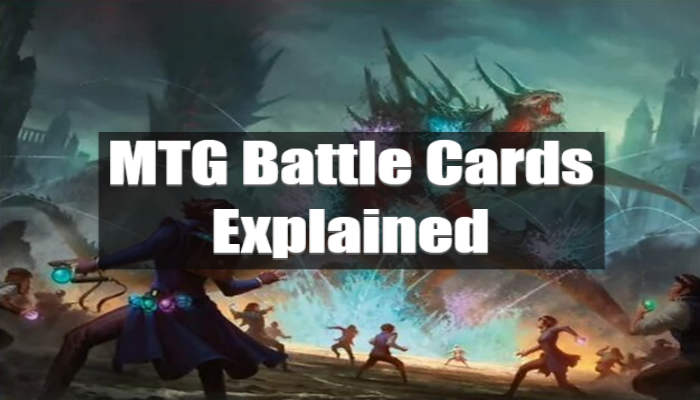WOTC and Mark Rosewater teased a new card type coming with March of the Machine. Looking at the reminder text for Atraxa, Grand Unifier, let us in on the fact that said card type would be called “battle” and there was much speculation as to what they may be. Now, the guessing is over and we have several cards to look at. Let’s start with “what is ‘battle’ in MTG?”
Battle cards are double-sided cards that represent the phyrexian invasions of different planes. When they enter the battlefield, you choose an opponent to protect it and you and any other players (besides the protector) may attack it. Each battle enters the battlefield with defense counters and when you damage them, counters equal to the damage come off. Then, when none are left, you exile it and cast the revere side.
Something so far out of the norm isn’t something that happens very often and battle cards are very unique. Even with that general definition out of the way, there are many things and many questions to answer. So, let’s break battle cards and how they work down further. As well as look at the cards themselves and discuss how impactful they’ll be for the game.
How Do Battle Cards Work?
Let’s take a more in-depth look at how battle cards work. To make things simpler, let’s use an example. We’ll use Invasion of Zendikar since both sides of the card have been spoiled. Assume you’re the one casting this thing – If there’s nothing on the stack, you can pay the four mana and cast this.
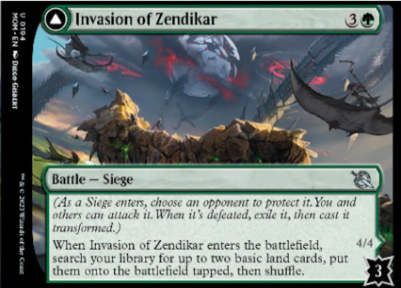
As it enters the battlefield, you choose an opponent to protect it. And as it says, you and any other players may attack it. The player you picked as the protector can use their creatures to block the incoming attacks if they choose. After you name the protector and this enters the battlefield the actual effect will trigger. In this case, you’ll search your library for up to two basic lands and put them onto the battlefield tapped.
Related: March of the Machine – Spoilers, Info, And More
Once you’ve chosen the protector and the enter the battlefield trigger resolves, it stays on the battlefield where players can attack it. When you deal it damage, you remove counters from the number in the bottom right corner. So, if you deal it one damage, it would have two remaining. This functions the same as loyalty counters for Planeswalkers when they receive damage. Once there are no more counters, you exile the battle and you cast the flip side.
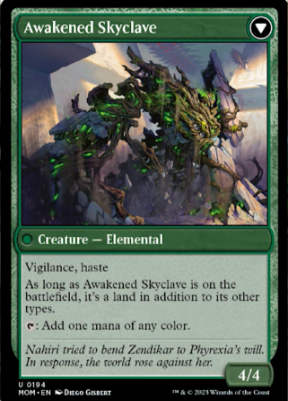
The flip side of our example card is Awakened Skyclave. It’s a 4/4 elemental creature, that’s also a land. It taps for one mana of any color and has a powerful combination of keyword abilities with vigilance and haste. As you can see, these battle cards stand to generate quite a lot of value. You’ll be getting the initial ETB effect of the battle plus something else if you can manage to defeat the battle.
While we’re on the topic of this particular card, I want to talk about Awakened Skyclave. First, vigilance and haste are very interesting on a mana dork. You’ll be able to immediately tap for mana. Furthermore, you can attack with this and tap it for mana in the same turn thanks to the vigilance, which is cool.
Next is the fact that this also counts as a land – That means that once this thing flips it will have added three lands to your
Concepts, Looks, And Flavor
36 planes are being invaded in MOM and it seems like each one will have its battle card. Not only is this cool but it also gives players quite a few different options to experiment with this new card type.
Speaking of this being a brand-new card type, they are very unique from several perspectives. They have features from several different permanents that already exist all mashed together. But there are a few things that we’ve never really seen before too. First, They are double-faced permanents that do something and can then transform. This isn’t completely new, as the same thing can be seen with sagas like Fable of the Mirror-Breaker.
They also have counters on them that you removed as the card takes damage. Which is almost identical to how the loyalty counters on Planeswalkers work. So, we’ve seen both of these elements before, and even on a single card. After all, Kytheon, Hero of Akros is a dual-faced permanent that transforms into a planeswalker when its conditions are met.
Moving on, battle cards are displayed horizontally with the card name, type, and text box in the center. The artwork isn’t quite boardless but it takes up all the space not filled by the other things mentioned above. I think the larger surface area of art lends a sense of scale and epicness to the scenes. And I don’t think there has ever been a permanent card (besides maybe a planechase card) that looks like this.
Related: MTG Planechase Explained: Rules, Gameplay And New Cards
Lore & Flavor Perspective
Here’s where things start to get crazy for me. As I mentioned, these battle cards are bringing the invasions into games of MTG. But they’re doing it in a very strange way. Let me explain. You’re casting the card and then forcing an opponent to defend it with their creatures. First, this is very unique. We’ve never seen other cards that played quite like these do.
Next, it’s strange from a flavor point of view. The person who casts the battle card is controlling the invading forces. Which I think is strange for some reason. Overall, from a gameplay perspective, I think it’s cool. But the idea of forcing the defending player into the role of realm defender is weird. Granted, they don’t have to block your attacks but if they don’t you’re going to generate a lot of value.
I think the best way to describe it is that it feels disruptive. As an opponent chosen as the protector, you have the burden of protecting something you didn’t cast. And not only did you not cast it, but your opponent got something. I think it’s going to lead to some massive upside for the caster most of the time.
There are a ton of disruptive elements in MTG but battle cards feel different. They feel more like a distraction for the defending player – One that if they choose to ignore, you’ll capitalize from. I don’t think it’s necessarily bad but I do think it’s strange. That said, you’ll be having to devote your attackers to the battle card as well, so maybe there’s more balance than it seems.
Battle Card Gallery
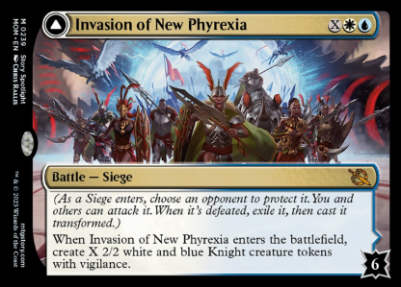
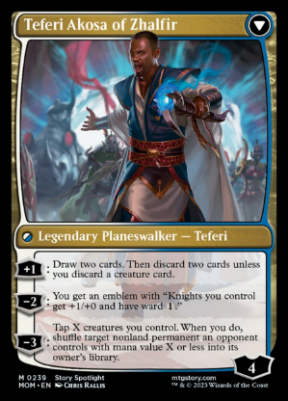


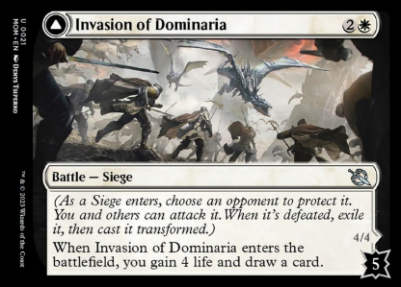
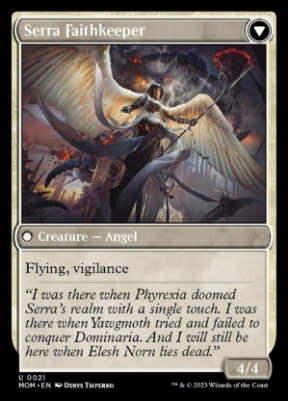
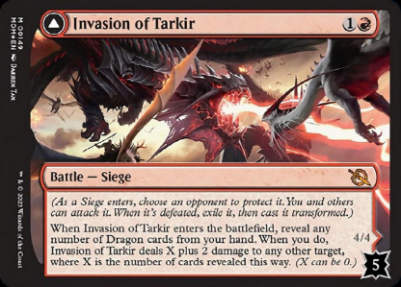
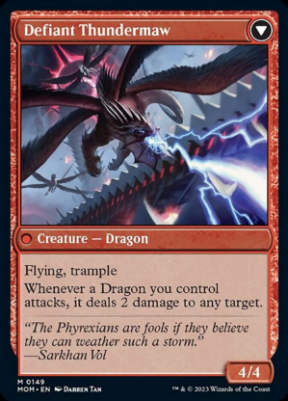
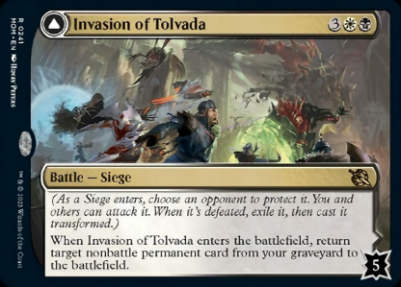
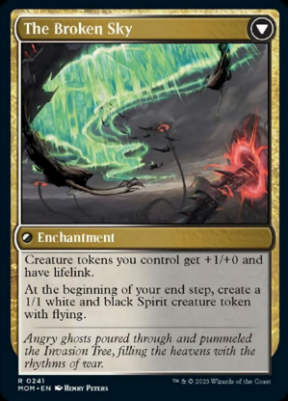
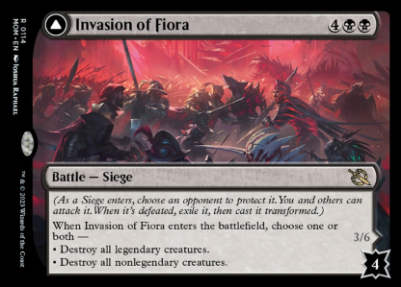
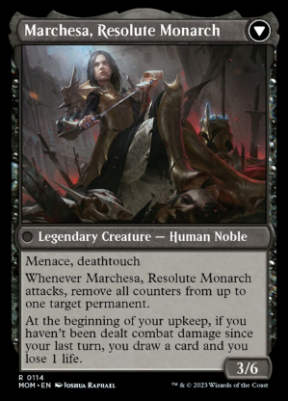
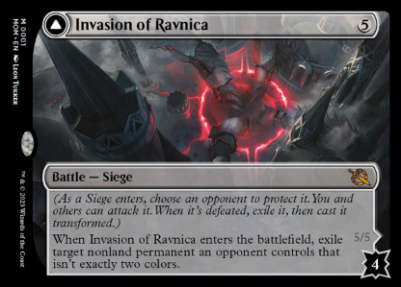
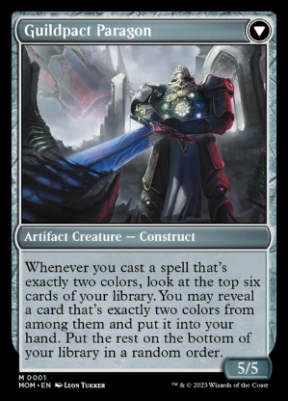
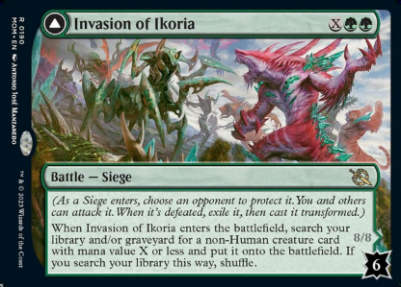
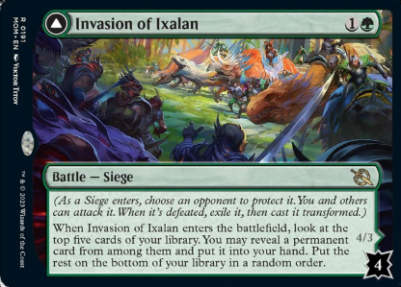
End Step
Getting new permanents for MTG is always exciting and battle cards are didn’t disappoint. I hope you walk away from today’s article with a better understanding of what battle cards are, what they so, and how they work. Now get out there and play some MTG with whichever of the new battle cards is your favorite. As someone who loves Orzhov, I think I’m going to build around Invasion of Tolvada first.
